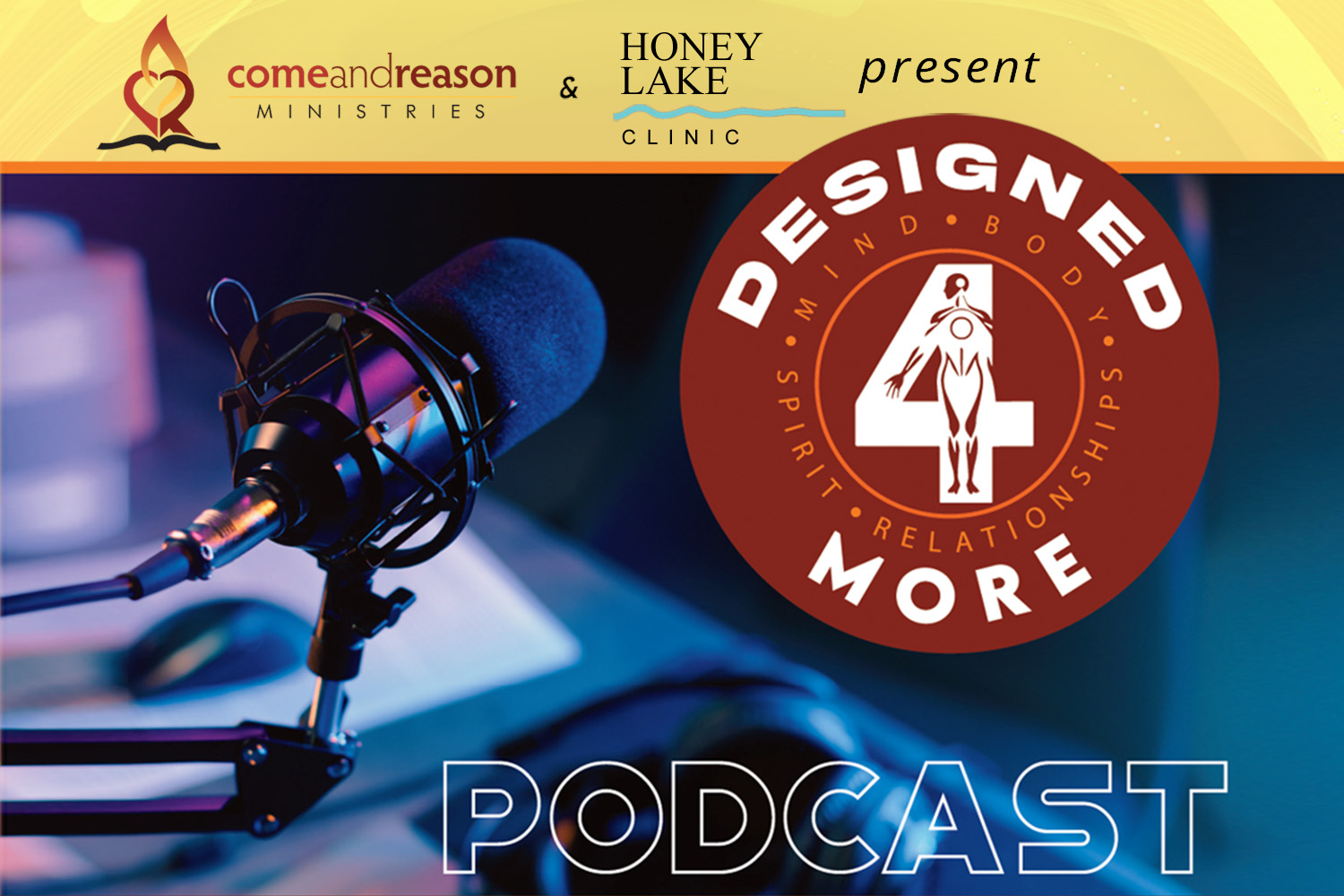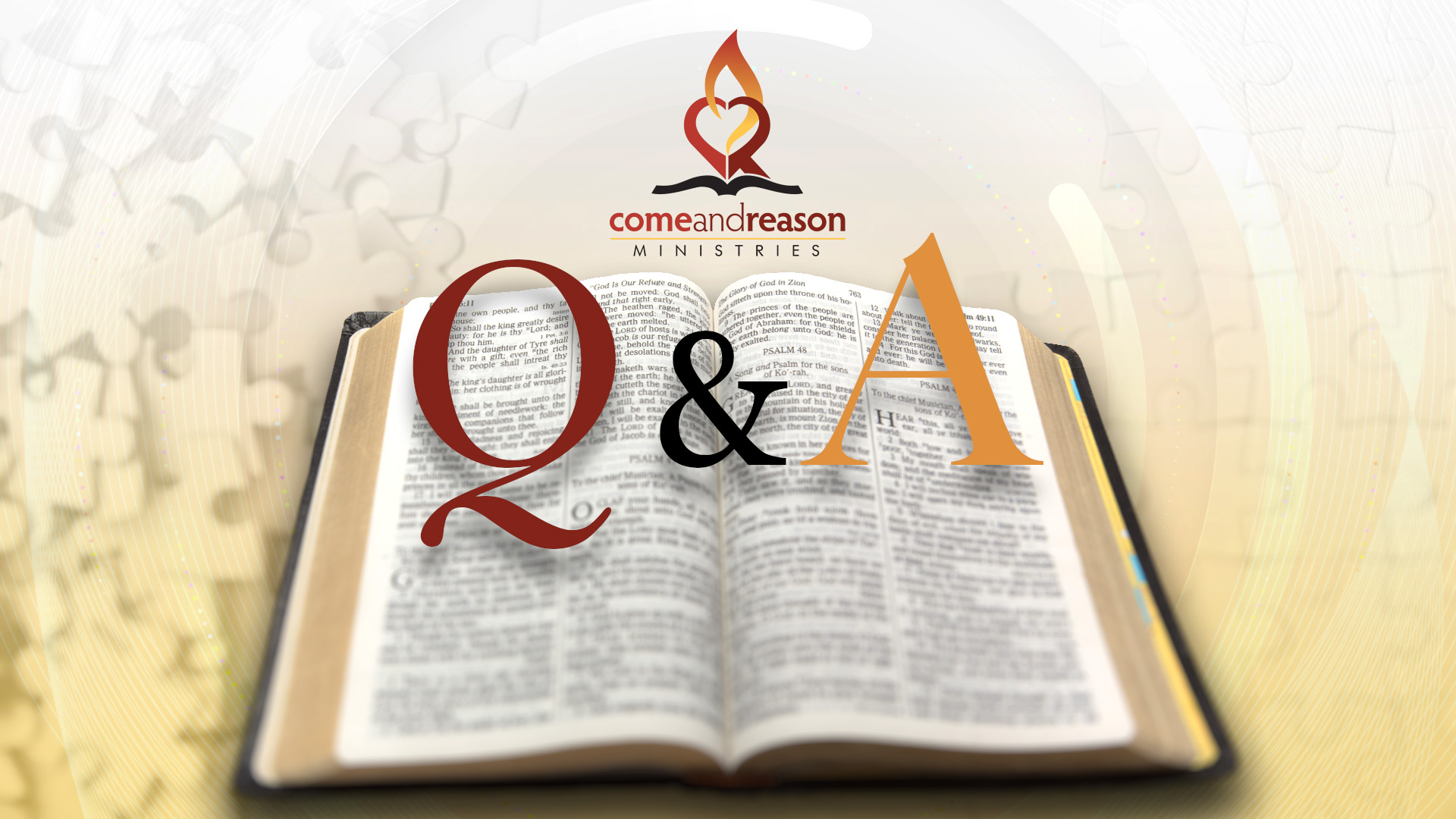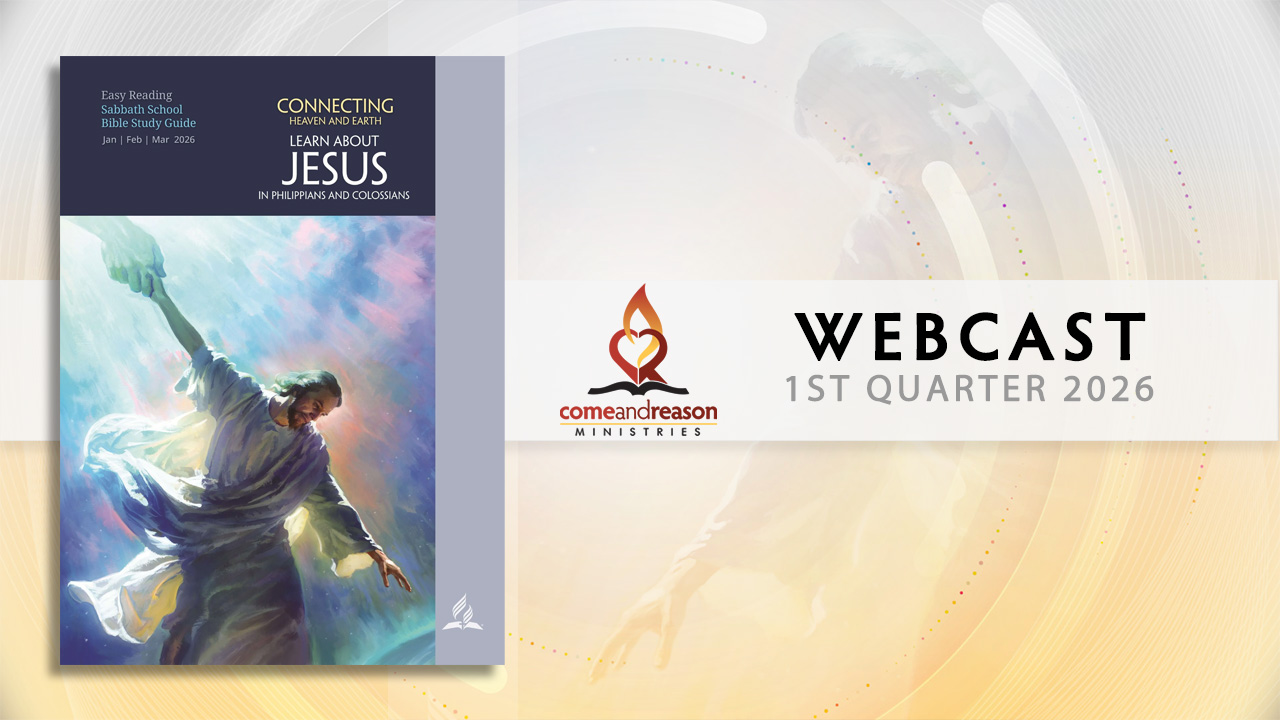This blog answers two questions submitted by listeners.
Question 1
┬ĀI have read your post from Dec 2020 titled ŌĆ£UNDERSTANDING BIBLE COMMENTARIES THROUGH DESIGN LAW,ŌĆØ but I still struggle not to see these EGW comments as penal-legal. Could you help me understand 1) if EGW meant them thru a Design Law lens, and 2) what would its Design Law interpretation be? For example: ŌĆ£He offered Himself without spot to God. The atonement of ChristŌĆ” was the fulfilling of every condition upon which God suspended the free communication of graceŌĆ”ŌĆØ (Manuscript 92, 1899).
My first recommendation is to always read widely and not form conclusions based on a few sentences. Read the entire article and get the full context. Read the authorŌĆÖs other writings to gain insight into how she used words and expressed ideas. Also, always compare the source material to ScriptureŌĆötest everything by the Bible. In other words, the Bible sets the standard for interpretation.
Second, determine which law lens you have when reading: humanŌĆÖs imposed law or GodŌĆÖs design law? In the passage in question, the author is describing the plan of salvation, the incarnation, and the substitutionary death of Jesus to redeem sinners. But what do you understand the sin problem to beŌĆöor what it actually is that we need to be saved from? If thinking through the imposed-law lens, we conclude that we are in legal trouble and the barrier to salvation is the death penalty that is imposed by God. If we think through design law, then we realize the barriers to salvation are 1) the lies about God that, when we believe them, prevent us from trusting Him and 2) our own fallen, carnal nature, the life inherited from Adam that is infected with fear and selfishness.
The law lens one holds sets the framework for how one interprets the language. In this case, the author is describing the design-law reality of how things actually work. As we read just a few paragraphs around the quote in question, we will see this. Below is a slightly wider quote from the cited manuscript interspersed with my comments:
Christ has purchased the world by making a ransom for it, by taking human nature. He was not only the offering, but He Himself was the Offerer. He clothed his divinity with humanity, and voluntarily took upon Him human nature, making it possible to offer Himself as a ransom (Letters & Manuscripts, vol 4, Manuscript 92, 1899).
A ransom is the price necessary to free one from bondage. What holds human sinners in bondage? The lies of Satan that we believe and our own carnal nature. What, then, is the ransom price, the price necessary to free us? The truth that destroys lies (John 8:32) and a new sinless life to replace our fallen, sinful, carnal life. This is symbolized by the bread of heaven, the Word that was made flesh (John 1). As we eat the Word (the truth that Jesus revealed), SatanŌĆÖs lies are displaced and we are won to trust. We then open our hearts to ŌĆ£drink,ŌĆØ that is, take in, the blood, which is symbolic of the life. (Leviticus 17:11). And the life that is represented by this blood, is the sinless life of Jesus. We become partakers of the divine nature so that it is no longer our old self that lives but Christ living in us (2 Peter 1:4; Galatians 2:20). So, the ransom price of truth and a new sinless life is applied, or paid, to the sinner who must eat the truth, the words of Christ, to dispel the lies and be restored to trust, and then open their heart in trust to receive the new life (John 6:53-55). This could not be done by declaration; it had to be accomplished in reality. Christ had to partake of humanity descended from Adam and reveal the truth about God while simultaneously, as a human being, destroying the infection of fear and selfishness and restoring love and trust into humanity, in order to save the human species created in Eden. And then we, through trust, established by the truth, partake/receive what He accomplished. This is not a penal/legal process; it is actual, healing, and restorative. Notice the next paragraph from the author:
ŌĆ£I am the living bread which came down from heaven,ŌĆØ He said. ŌĆ£If any man eat of this bread he shall live for ever.ŌĆØ It is the tree of life. ŌĆ£And the bread that I will give is my flesh, which I will give for the life of the world. … Whoso eateth my flesh and drinketh my blood hath eternal life, and I will raise him up at the last day. For my flesh is meat indeed, and my blood is drink indeed. He that eateth my flesh and drinketh my blood dwelleth in me and I in him. As the living Father hath sent me, and I live by the Father; so he that eateth me, even he shall live by me. … It is the Spirit that quickeneth; the flesh profiteth nothing; the words that I speak unto you, they are spirit, and they are lifeŌĆØ [John 6:51, 54-57, 63.] (ibid).
After talking about the ransom price, the author immediately describes what that price actually is and to whom it is paid by quoting Scripture. It is truth and a sinless life represented by flesh and blood that is paid to us sin-sick sinners to provide us a real solution that literally, actually, in reality saves, delivers, redeems us from sin. This is reality, design law, removing lies, restoring trust, and giving a new life!
Christ was without sin, else His life in human flesh and His death on the cross would have been of no more value in procuring grace for the sinner than the death of any other man (ibid).
The value of ChristŌĆÖs actions, life, death, and resurrection is found in their ability to free sinners from sin. The value is in giving us a sinless life. There is no value in giving us another sinful life, one that doesnŌĆÖt heal, save, cure, or redeem us. Thus, the value in JesusŌĆÖ life is that it is sinless and that when we receive it through faith, we are reborn with a new heart and right spirit, the life of Christ who now lives in us. But He can only provide the sinless life because He was a real sinless human being. Notice the next words from the author:
While He took upon Him humanity, it was a life taken into union with Deity (ibid).
This was the means of saving humanity. He partook of the life breathed into Adam and which was corrupted by Adam, but JesusŌĆÖ humanity also partook of divinity through the Holy Spirit at His incarnation. In doing this, He was able, in His humanity, to overcome the infection of fear and selfishness and purge it from humanity and, thereby, become the second Adam, redeeming/saving the race, the species, that He created in Eden.
He could lay down His life as priest and also victim. He possessed in Himself power to lay it down and take it up again. He offered Himself without spot to God (ibid).
Thus, after His victory, after He purified the species (in His person) from sin, Jesus was able to take humanity back into GodŌĆÖs kingdom and offer humanity back to God as a species redeemed, cleansed, renewed, recreated, restored to loyalty and perfection. Remember, He is offering His human self without spot to God! This offering is not a payment to God; it is a restoration to God of that which was lostŌĆöthe one lost sheep the Shepherd sought and has been brought back to His Father. What a great gift that Jesus brings to His Father! This is not a legal payment to persuade God to be gracious and forgiving, but the most precious gift a loving Son could give His Father of love. He offers to His Father that which thrills the FatherŌĆÖs heartŌĆöhumanity purified, elevated, cleansed, sinless, and perfected!
The atonement of Christ sealed forever the everlasting covenant of grace. It was the fulfilling of every condition upon which God suspended the free communication of grace to the human family. Every barrier was then broken down which intercepted the freest fulness of the exercise of grace, mercy, peace, and love to the most guilty of AdamŌĆÖs race (ibid).
The barriers that obstructed our connection to God are the lies of Satan that we believed, which caused distrust of God and which were broken down by the truth, love, and kindness of God, as Paul wrote, the kindness of God leads us to repentance (Romans 2:4); and our fallen, selfish, carnal nature is broken down through ChristŌĆÖs victory at the cross, where He destroyed the infection of fear and selfishness, removing it from the humanity He assumed, and rose again in a purified humanity. We receive that life, that new heart and right spirit, through the restored trust via the indwelling of the Holy Spirit. This is symbolized by the tearing of the veil and opening the way back to the Father.
┬Ā
Question 2
Thank you, Dr. Tim, for your ministry. I have been following since 2012 and have since then been convicted of the truths you share. Please, in the light of design law, explain the following Desire of Ages quote: ŌĆ£For transgression of the law of God, Adam and Eve were banished from Eden. Christ, our substitute, was to suffer without the boundaries of Jerusalem. He died outside the gate, where felons and murderers were executed. Full of significance are the words ŌĆśChrist hath redeemed us from the curse of the law, being made a curse for us.ŌĆÖ Galatians 3:13.ŌĆØ
Here are other phrases cited: ŌĆ£the terrible manifestation of His displeasure because of iniquityŌĆØ; ŌĆ£The Saviour could not see through the portals of the tombŌĆØ; ŌĆ£or tell Him of the FatherŌĆÖs acceptance of the sacrifice. He feared that sin was so offensive to God that Their separation was to be eternalŌĆØ; and, ŌĆ£it was the sense of sin, bringing the FatherŌĆÖs wrath upon Him as the sinnerŌĆÖs substitute, that made the cup He drank so bitter, and broke the heart of the Son of God.ŌĆØ
Again, always read widely, the entire chapter, book, and other writings from the author to get the context and ensure you are applying the same meaning to words the author is. And, of course, always compare the text with Scripture and believe only that which harmonizes with Scripture. We also ask, what law lens are we viewing things through? What do you understand the sin problem to be? Is it actual, a state of being that Jesus is coming to cure, or is it legal, a problem with God and GodŌĆÖs legal justice system?
Also, get the biblical definition of words, such as wrath. What do you understand GodŌĆÖs wrath to be? Romans 1:18ŌĆō32 and many other passages define GodŌĆÖs wrath as letting sinners go to reap what sin causes; it is when God stops using power to protect, restrain, and hold at bay what sin causes. Human law, however, defines wrath as the use of power to inflict punishment for rule-breaking. We will be misled in our understanding if we use this sin-marred human understanding rather than a biblical definition of wrath.
Turning to the quote in question, if we read the sentence immediately before where you started your excerpt, we find the context, which frames the meaning:
ŌĆ£That He might sanctify the people with His own blood,ŌĆØ Christ ŌĆ£suffered without the gate.ŌĆØ Hebrews 13:12. (Desire of Ages, pg 741).
The authorŌĆÖs focus is on cleansing, healing, and sanctifying sinners with ChristŌĆÖs blood, which is not a reference to red corpuscles. The blood is symbolic of the life of Christ. Sanctification is not a legal process; it is actualŌĆöit is transformational, regenerational, purifying, and, thus, the author is saying by the sinless life of Christ we are cleansed from sin when we surrender ourselves in trust, die to the old life, and through faith receive a new life, a new spirit, and are reborn in the inner person. The new life is the life of Jesus received through the indwelling Holy Spirit.
For transgression of the law of God, Adam and Eve were banished from Eden. Christ, our substitute, was to suffer without the boundaries of Jerusalem. He died outside the gate, where felons and murderers were executed. Full of significance are the words, ŌĆ£Christ hath redeemed us from the curse of the law, being made a curse for us.ŌĆØ Galatians 3:13 (ibid).
What is the curse of the law? Is it legal or actual? If you jump into the ocean with weights tied to your legs, violating the law of respiration, what is the curse for doing that? DeathŌĆöand why? Because the law of respiration is a law upon which life is built and going out of harmony with it results in death. The law cannot be changed to meet a sinner in sin; to save sinners requires that sinners be changed back into harmony with the law. The life we inherit from Adam is corrupt with selfishness; it cannot be cleansed; it can only be replaced with a sinless life. Thus, we must die to the old life and receive the new life, the blood, of Jesus. And when we do this, we are redeemed from the curse of the law because we are restored to harmony with it. Jesus became the curse by taking the infected life upon Himself and in Himself, destroying that infected life at the cross and, thus, He rose with a purified humanity animated only by His divine, sinless life. And through faith, we all can be partakers of that life.
Upon Christ as our substitute and surety was laid the iniquity of us all (ibid).
Yes, our sinfulness, or sin-sickness, the terminal sin-condition that we all inherit through Adam, He partook of through Mary.
He was counted a transgressor, that He might redeem us from the condemnation of the law (ibid).
Yes, He was counted as one sin-infected through the life He inherited from Adam, but because He also had life from the Holy Spirit that was sinless, in JesusŌĆÖ humanity, He could be tempted in every way just like we are but be without sin (Heb 4:15) because He was able to choose to live a life animated, motivated, by the spirit of love and trust, the life He inherited from the Holy Spirt. And once He developed a perfect, mature, sealed, and settled human character, and destroyed the infection of fear and selfishness at the cross, He became the source of salvation for all who obey Him (Heb 5:9,10), and through faith we receive that life and are redeemed.
The guilt of every descendant of Adam was pressing upon His heart (ibid).
This is the emotional guilt, the fear and shame, that sin causes in the heart and mind of sinners. This is not legal guilt for crimes or sins; it is the emotional anguish that sin causesŌĆöthat caused Adam and Eve to run and hide from God and all sinners to distrust God and try to save self. Jesus felt temptation in all points just like us but did not sin. This means He was tempted with the emotional fear, guilt, and shame that sin causes, but He despised the shame and overcame through love and trust in His Father. This is most powerful revealed in His ordeal in Gethsemane.
The wrath of God against sin, the terrible manifestation of His displeasure because of iniquity, filled the soul of His Son with consternation (ibid).
Jesus felt the horror of what sin does, how it separates from God, causes fear, guilt, shame, dread, terror, and how much God hates sin because of what it does to His creation. God hates that unremoved sin severs His creatures from Him, for there is no uniting of sin with God. Sin only separates. GodŌĆÖs wrath is when He stops holding at bay the severing and destroying results of sin and allows people to reap what they have insisted upon. And Jesus, who knew no sin, became sin for us so that we might become the righteousness of God (2 Corinthians 5:21); thus, He felt the disconnection from His Father that sin causes. This further tempted Jesus, in His humanity, with fear, despair, and hopelessness. But again, Jesus overcame by love and trust in His Father. And the Father abandoned Jesus on the cross (His wrathŌĆöRomans 4:25) not as an infliction of judicial punishment, not as a dispersement of divine power to punish, but as a cooperative action between the Father and Jesus for them to accomplish their joint mission of saving humanity. Jesus could not die and reveal the truth that God is love, is self-sacrificing, is trustworthy with all power, and simultaneously destroy the infection of fear and selfishness from humanity if the Father, the source of life, did not let go of Him. So the Father abandoned Jesus on the Cross to His free choice to be our substitutionary Savior and destroy the infection of sin and save humanity. Again, this is all the outworking of GodŌĆÖs design law to heal and restore, to save, humanity.
All His life Christ had been publishing to a fallen world the good news of the Father’s mercy and pardoning love. Salvation for the chief of sinners was His theme. But now with the terrible weight of guilt He bears, He cannot see the Father’s reconciling face. The withdrawal of the divine countenance from the Saviour in this hour of supreme anguish pierced His heart with a sorrow that can never be fully understood by man. So great was this agony that His physical pain was hardly felt.
Satan with his fierce temptations wrung the heart of Jesus. The Saviour could not see through the portals of the tomb┬Ā(Desire of Ages, pg 753).
Jesus had no prophetic vision that opened the future to Him. Thus, the temptations were extreme. He was able to overcome by faith, by trust, in His Father, not through a prophetic vision of the future.
Hope did not present to Him His coming forth from the grave a conqueror, or tell Him of the Father’s acceptance of the sacrifice. He feared that sin was so offensive to God that Their separation was to be eternal (ibid).
That is the temptation that sin brings, and Jesus felt it more severely than any other human. Sin causes fear. After Adam sinned, he ran because he was afraid. Jesus came to redeem AdamŌĆÖs failure and pick up a humanity damaged and infected by AdamŌĆÖs failure. And, thus, JesusŌĆÖ life inherited through Mary is infected with fear, and He experienced its terrible tempting power. Again, Jesus was tempted in all points like us, but He overcame by exercising the abilities available to us, focusing on truth, love, and trust in His Father.
Christ felt the anguish which the sinner will feel when mercy shall no longer plead for the guilty race. It was the sense of sin, bringing the Father’s wrath upon Him as man’s substitute, that made the cup He drank so bitter, and broke the heart of the Son of God (ibid).
If you keep reading this section, you will discover that the Father suffered with His Son but hid His presence from Jesus for the purpose of completing the mission. And three pages later, the author describes how Jesus overcame:
Amid the awful darkness, apparently forsaken of God, Christ had drained the last dregs in the cup of human woe. In those dreadful hours He had relied upon the evidence of His Father’s acceptance heretofore given Him. He was acquainted with the character of His Father; He understood His justice, His mercy, and His great love. By faith He rested in Him whom it had ever been His joy to obey. And as in submission He committed Himself to God, the sense of the loss of His Father’s favor was withdrawn. By faith, Christ was victor (Desire of Ages, pg 756).
Jesus overcame by trusting His Father based on the evidence, facts, truth, and experiences He had with the Father prior to the events of the crucifixion weekend. Thus, the entire description by this author is a description of reality, of design law, and there is nothing penal/legal going on in the plan of salvation. It is entirely the outworking of truth and love in an atmosphere of freedom! Jesus actually saved, healed, redeemed, perfected, elevated, ennobled, glorified humanity! Salvation in Jesus is real and He offers this incredible gift to every single person who will open their heart in trust to Him. If you havenŌĆÖt already done so, I encourage you to open your heart in trust and be reborn with a new life, the life of Jesus.
┬Ā












 using your credit or debit card (no PayPal account needed, unless you want to set up a monthly, recurring payment).
using your credit or debit card (no PayPal account needed, unless you want to set up a monthly, recurring payment). instead?
instead?